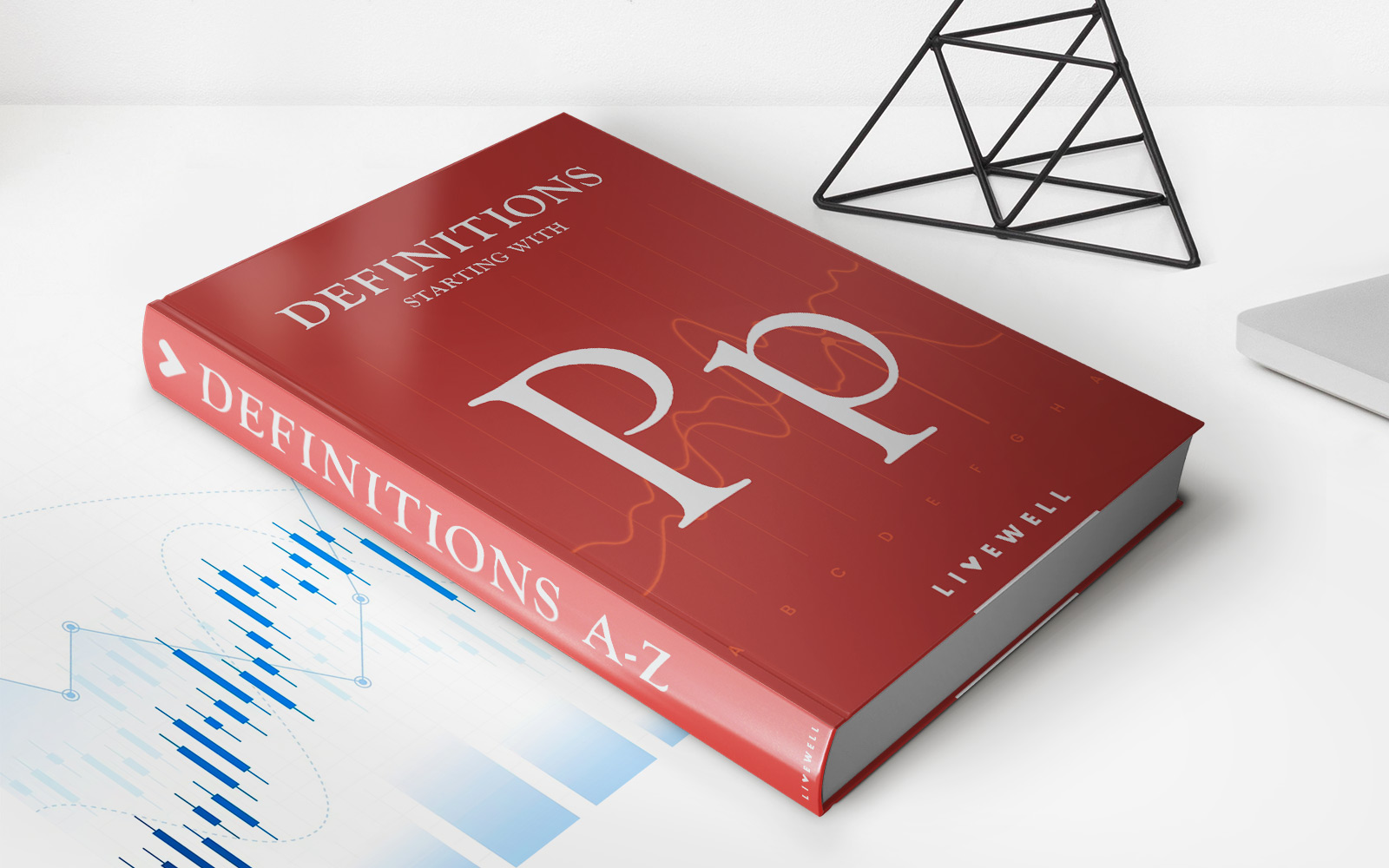Home>Finance>How To Protect Retirement Savings From Nursing Home


Finance
How To Protect Retirement Savings From Nursing Home
Published: January 16, 2024
Learn effective strategies to safeguard your retirement savings from nursing home costs. Secure your financial future with expert finance tips.
(Many of the links in this article redirect to a specific reviewed product. Your purchase of these products through affiliate links helps to generate commission for LiveWell, at no extra cost. Learn more)
Table of Contents
- Introduction
- Understanding the Importance of Protecting Retirement Savings
- Planning for Long-Term Care
- Medicaid Eligibility and Asset Protection
- Strategies for Protecting Retirement Savings
- Utilizing Trusts and Estate Planning
- Long-Term Care Insurance Options
- Considering Annuities and Life Insurance Policies
- Other Financial Planning Considerations
- Conclusion
Introduction
Protecting retirement savings is a critical concern for many individuals as they plan for their future. While retirement is often seen as a time of relaxation and enjoyment, the potential need for long-term care, such as nursing home services, can pose a significant financial challenge. The cost of long-term care can quickly deplete a person’s savings and assets, leaving them vulnerable to financial hardship.
In this article, we will explore the importance of protecting retirement savings and discuss strategies that can help safeguard these funds from the high costs of nursing home care. Whether you are currently in retirement or planning for the future, understanding these strategies can provide you with peace of mind knowing that your hard-earned savings are protected.
As we delve into this topic, it’s crucial to recognize that planning for long-term care involves proactive decision-making, including considering Medicaid eligibility, utilizing trusts and estate planning, exploring long-term care insurance options, and considering annuities and life insurance policies. Additionally, we will touch upon other financial planning considerations that can support your retirement savings protection.
By gaining insights into these strategies and incorporating them into your financial plan, you can help ensure that you have a solid foundation to protect your retirement savings from the potentially devastating costs of nursing home care.
Understanding the Importance of Protecting Retirement Savings
Retirement savings represent a culmination of years of hard work and financial planning. These funds are essential in providing a comfortable and secure retirement. However, the need for long-term care, such as nursing home services, can put these savings at risk if proper protections are not in place.
Long-term care costs can be staggering, with the average annual cost of a private room in a nursing home exceeding $100,000. Without adequate protection, individuals may have to deplete their savings to pay for these expenses, leaving them with limited resources for essential needs, medical bills, and maintaining their desired quality of life.
By protecting retirement savings, individuals can ensure that they have the financial resources to support themselves throughout retirement, even in the face of potential long-term care costs. Maintaining sufficient savings allows individuals to have control over their healthcare choices and maintain their independence and dignity.
Additionally, protecting retirement savings can provide peace of mind for individuals and their families. Knowing that there are safeguards in place can alleviate the stress and anxiety associated with the uncertainty of future healthcare expenses. It allows individuals to focus on enjoying their retirement years without the constant worry of their savings being depleted by long-term care costs.
Furthermore, protecting retirement savings can have a positive impact on the financial well-being of future generations. By preserving these funds, individuals can pass on a financial legacy to their loved ones, providing them with a strong foundation for their own financial security.
Overall, the importance of protecting retirement savings cannot be overstated. It is an essential aspect of comprehensive financial planning that allows individuals to maintain their independence, quality of life, and financial security in the face of potential long-term care expenses. With the right strategies and protections in place, individuals can enjoy their retirement years without the fear of their hard-earned savings being jeopardized by nursing home costs.
Planning for Long-Term Care
Planning for long-term care is a crucial part of protecting retirement savings. Long-term care refers to the assistance and support services needed by individuals who have difficulty performing daily activities independently due to chronic illnesses, disabilities, or the aging process. While it’s often a topic that many would rather avoid, preparing for long-term care can help mitigate the financial burden it may impose.
One of the first steps in planning for long-term care is to educate yourself about the different types of care available and their associated costs. This includes understanding the various options such as nursing homes, assisted living facilities, and home healthcare services. By researching and understanding the costs involved, you can better estimate the amount of savings needed to cover potential long-term care expenses.
It’s essential to develop a realistic budget that takes into account the potential costs of long-term care. This budget should include provisions for medical expenses, home modifications, and any additional assistance needed to ensure a comfortable living environment. By budgeting for long-term care expenses, you can set aside appropriate savings or explore insurance options that can help cover these costs.
Long-term care insurance is an important consideration when planning for long-term care. This type of insurance can provide financial assistance to cover the costs associated with nursing home care, assisted living facilities, and in-home care services. It’s important to research different insurance providers, policies, and coverage options to find a plan that best suits your needs and budget.
Additionally, Medicaid should be considered as a valuable resource for long-term care planning. Medicaid is a joint federal and state program that provides financial assistance for individuals who meet specific income and asset requirements. Medicaid can help cover the costs of long-term care services, including nursing home care. Understanding the eligibility criteria and planning accordingly can help protect retirement savings while ensuring access to necessary care.
Finally, it’s beneficial to explore alternative care options and community resources that can help support individuals in their desire to age in place. This may involve engaging in community activities, accessing local support groups, or arranging for home healthcare services that can lessen the need for institutionalized care.
By taking a proactive approach to planning for long-term care, individuals can better protect their retirement savings while ensuring access to the necessary support and services as they age. By considering budgets, insurance options, Medicaid eligibility, and community resources, individuals can make informed decisions that align with their financial goals and preferences.
Medicaid Eligibility and Asset Protection
Medicaid is a government-funded program that provides healthcare coverage to individuals with low income and limited assets. When it comes to long-term care, Medicaid can play a vital role in covering the costs of nursing home care. However, to qualify for Medicaid, individuals must meet specific income and asset eligibility requirements.
Medicaid has strict guidelines regarding the amount of assets an individual can own while still qualifying for benefits. These guidelines vary by state but often include limits on the value of a primary residence, vehicles, and other assets. It’s essential to understand these guidelines and plan accordingly to protect retirement savings.
One common strategy to protect retirement savings while qualifying for Medicaid is through the use of a Medicaid Asset Protection Trust (MAPT). By transferring assets into an irrevocable trust, individuals can effectively remove those funds from their countable assets for Medicaid eligibility purposes. The trust can be structured in a way that still allows the individual to receive income from the trust while preserving the principal for their beneficiaries.
It’s important to note that transferring assets to a MAPT must be done well in advance of needing Medicaid benefits. Medicaid has a look-back period, typically five years, where transfers of assets are reviewed. If assets are transferred within this period, there may be penalties or delays in eligibility for Medicaid benefits.
Another option to protect retirement savings while qualifying for Medicaid is through strategic spend-down. This involves using excess assets to pay for eligible expenses such as home modifications, medical equipment, or prepaying for funeral or burial services. By incurring these expenses, individuals can reduce their countable assets to the Medicaid eligibility threshold.
Seeking professional guidance, such as consulting with an elder law attorney or financial advisor experienced in Medicaid planning, can be beneficial when navigating Medicaid eligibility and asset protection. These professionals can provide valuable insights and help individuals develop a customized plan that aligns with their specific financial situation and goals.
It’s important to remember that Medicaid eligibility rules and asset protection strategies can be complex and vary by state. Therefore, it’s crucial to stay informed about the latest regulations and consult with professionals who are well-versed in this area of planning.
By understanding Medicaid eligibility requirements and employing asset protection strategies, individuals can potentially qualify for the program while safeguarding their retirement savings from the high costs of nursing home care. This allows individuals to access the care they need without draining their hard-earned savings.
Strategies for Protecting Retirement Savings
Protecting retirement savings from the potential costs of long-term care requires careful planning and consideration. Here are some strategies that can help safeguard your savings and ensure financial security:
1. Utilizing Trusts and Estate Planning
Establishing trusts, such as irrevocable living trusts or special needs trusts, can help protect assets and provide flexibility in managing and distributing funds while still ensuring eligibility for government assistance programs. These trusts can help shield assets from being counted towards Medicaid eligibility while preserving them for beneficiaries.
2. Long-Term Care Insurance Options
Long-term care insurance can provide substantial coverage for nursing home care, assisted living, and in-home care services. By purchasing a policy early in life, you can secure lower premiums and ensure that your savings are protected if long-term care becomes necessary. It’s important to carefully review policy terms, coverage limits, and exclusions before making a decision.
3. Considering Annuities and Life Insurance Policies
Annuities and life insurance policies can serve as additional vehicles for protecting retirement savings. Certain types of annuities, such as Medicaid-compliant annuities, can help convert assets into an income stream while preserving eligibility for Medicaid. Life insurance policies with long-term care riders can provide both a death benefit and coverage for long-term care expenses.
4. Other Financial Planning Considerations
Implementing other financial planning strategies can also help protect retirement savings. This includes having appropriate health insurance coverage to manage medical expenses, establishing a well-structured budget to control spending, and diversifying investments to minimize risk. Regular review and adjustment of your financial plan based on changing circumstances and goals are also essential.
5. Seek Professional Advice
Seeking guidance from financial advisors, estate planners, and elder law attorneys who specialize in retirement planning and long-term care can provide valuable insights and expertise. These professionals can help you understand the available options and navigate the complexities of the strategies mentioned above, ensuring that your retirement savings are protected and aligned with your specific needs and goals.
It’s important to note that these strategies should be considered in advance and as part of a comprehensive retirement plan. Proactive planning and regular review can help ensure that your retirement savings are well-protected and provide the financial security and peace of mind you desire.
Utilizing Trusts and Estate Planning
When it comes to protecting retirement savings, utilizing trusts and estate planning strategies can be highly effective. These tools provide individuals with a means to safeguard their assets while ensuring their wishes are carried out. Here are some ways trusts and estate planning can help protect retirement savings:
1. Revocable Living Trust
A revocable living trust is a common estate planning tool that allows individuals to transfer assets into the trust’s ownership while retaining control during their lifetime. One of the benefits of a revocable living trust is that it allows for seamless management and distribution of assets in case of incapacitation or death. By placing assets in a revocable living trust, individuals can protect their savings from probate, minimize estate taxes, and maintain privacy for their beneficiaries.
2. Irrevocable Trusts
An irrevocable trust, such as a Medicaid Asset Protection Trust (MAPT), can help protect retirement savings from being counted towards Medicaid eligibility. By transferring assets into an irrevocable trust, individuals can effectively remove those funds from their countable assets. However, it’s important to note that once assets are transferred into an irrevocable trust, they cannot be easily accessed or changed. Seeking legal advice and planning well in advance are crucial for utilizing this strategy effectively.
3. Special Needs Trust
A special needs trust is designed to benefit individuals with disabilities without impacting their eligibility for government assistance programs such as Medicaid or Supplemental Security Income (SSI). By establishing a special needs trust, retirement savings can be used to provide additional support and enhance the quality of life for loved ones with special needs, while still ensuring their access to crucial government benefits.
4. Beneficiary Designations
Ensuring proper beneficiary designations on retirement accounts and life insurance policies is an integral part of estate planning. By designating specific individuals or trusts as beneficiaries, retirement savings can bypass the probate process and go directly to the intended recipients. This can help protect assets from potential claims or creditors and ensure that beneficiaries receive the intended financial support.
5. Periodic Estate Planning Review
Estate planning is not a one-time event. It’s important to regularly review and update plans to reflect changing circumstances, such as life events, changes in financial goals, or revisions in estate planning laws. Regular review ensures that retirement savings remain protected and aligned with your current wishes and needs.
Working with an experienced estate planning attorney can provide valuable guidance in utilizing trusts and estate planning strategies effectively. They can help determine the most appropriate trust structures, assist with beneficiary designations, and ensure that your estate plan is complete and up to date.
By utilizing trusts and estate planning, individuals can have peace of mind knowing that their retirement savings are protected, their wishes are honored, and their loved ones are provided for according to their specific intentions.
Long-Term Care Insurance Options
Long-term care insurance is a valuable tool for protecting retirement savings from the high costs of nursing home care, assisted living facilities, and in-home care services. It provides financial coverage for the expenses associated with long-term care, allowing individuals to maintain their independence while preserving their retirement funds. Here are some long-term care insurance options to consider:
Traditional Long-Term Care Insurance Policies
Traditional long-term care insurance policies offer comprehensive coverage for a range of long-term care services. These policies typically have a daily benefit amount and a benefit period, along with a waiting period before benefits begin. The premiums for this type of policy are typically based on the age and health of the insured at the time of purchase.
Hybrid Life Insurance and Long-Term Care Policies
Hybrid policies combine the benefits of life insurance and long-term care coverage into a single policy. If the policyholder requires long-term care, a portion of the death benefit can be used to cover those expenses. This type of policy provides the flexibility to access the death benefit for long-term care needs while still providing a benefit to beneficiaries if long-term care is not needed.
Linked Benefit Annuities
Linked benefit annuities are another option for long-term care protection. These annuities combine the benefits of an annuity with long-term care coverage. If the policyholder requires long-term care, the annuity can be used to cover those expenses. If long-term care is not needed, the annuity functions as a regular annuity, providing income at a later stage in retirement.
Group Long-Term Care Insurance
Group long-term care insurance policies are often offered through employers or associations and can provide coverage at a lower cost than individual policies. These policies may have less stringent underwriting requirements and can be a viable option if available through your employer or an organization you belong to.
Qualifying for Long-Term Care Insurance
When considering long-term care insurance, it’s important to evaluate your eligibility based on age and health. Generally, the younger and healthier you are, the more options you will have and the more affordable the premiums may be. It’s also crucial to understand policy terms, coverage limits, waiting periods, and any exclusions or limitations associated with pre-existing conditions.
It’s recommended to work with an insurance professional specializing in long-term care insurance. They can help evaluate your needs, compare policies from different insurers, and recommend the most suitable options based on your unique circumstances.
By securing long-term care insurance, individuals can protect their retirement savings and ensure access to the care they may need in the future. It provides financial peace of mind and empowers individuals to maintain control over their healthcare choices while preserving their hard-earned assets.
Considering Annuities and Life Insurance Policies
Annuities and life insurance policies can be valuable tools for protecting retirement savings while providing additional benefits for long-term care expenses. These financial products offer a range of options to consider when planning for potential long-term care needs. Here’s how annuities and life insurance policies can help:
Annuities
An annuity is a financial product that provides a steady stream of income over a specified period or for the rest of your life. It can be a helpful tool for protecting retirement savings from long-term care costs. Here are two types of annuities to consider:
1. Immediate Annuities
Immediate annuities can provide a reliable income stream to cover long-term care expenses. With an immediate annuity, you give a lump sum payment to an insurance company in exchange for regular payments that start immediately. This can help ensure that you have a consistent income source to cover long-term care costs without depleting your retirement savings.
2. Medicaid Compliant Annuities
Medicaid-compliant annuities are specifically designed to help individuals qualify for Medicaid while protecting their assets. By converting excess assets into an income stream through an annuity, individuals can meet Medicaid’s income limits and still have funds available to cover their long-term care needs.
Life Insurance Policies
Life insurance policies can also provide protection for long-term care expenses. Here are two types of life insurance policies to consider:
1. Traditional Life Insurance Policies with Long-Term Care Riders
Many life insurance policies offer long-term care riders, which allow you to access a portion of the death benefit for long-term care expenses while still providing a death benefit to your beneficiaries. These riders can be an effective way to protect your retirement savings and ensure that your loved ones are provided for if long-term care is not needed.
2. Hybrid Life Insurance and Long-Term Care Policies
Hybrid life insurance and long-term care policies combine the benefits of both types of coverage into a single policy. These policies provide a death benefit to beneficiaries if long-term care is not needed. If long-term care is required, a portion of the death benefit can be used to cover the expenses. This type of policy offers flexibility and can be a suitable option for those looking to protect their retirement savings while having coverage for long-term care.
When considering annuities and life insurance policies for long-term care protection, it’s essential to carefully review the terms, coverage limits, premiums, and any exclusions or limitations related to pre-existing conditions. Consulting with a financial advisor experienced in these products can help you make informed decisions that align with your financial goals and long-term care needs.
By utilizing annuities and life insurance policies, individuals can protect their retirement savings from the potentially high costs of long-term care while ensuring financial security for themselves and their loved ones.
Other Financial Planning Considerations
Protecting retirement savings from long-term care costs requires a holistic approach to financial planning. In addition to long-term care insurance and trust strategies, there are several other important considerations to keep in mind. Here are some additional financial planning considerations:
1. Health Insurance Coverage
Having appropriate health insurance coverage is crucial for managing medical expenses. Medicare, the federal health insurance program for individuals age 65 and older, covers certain aspects of long-term care, but it is limited. Supplemental insurance plans, such as Medicare Advantage or Medigap policies, can help fill the gaps in coverage. It’s important to review your health insurance options and choose plans that align with your healthcare needs and potential long-term care requirements.
2. Budgeting and Expense Management
Developing a well-structured budget is essential for managing retirement savings and preparing for long-term care expenses. By tracking your income and expenses, you can identify areas where you can potentially save or allocate more funds towards future long-term care needs. It’s also important to regularly review and adjust your budget to reflect changing circumstances or expenses as you move closer to retirement.
3. Diversification of Investments
Having a diversified investment portfolio can help minimize risk and protect retirement savings. By spreading your investments across different asset classes, such as stocks, bonds, real estate, and cash equivalents, you can potentially reduce vulnerability to market fluctuations. Diversification can provide stability and ensure that you have funds available for long-term care expenses, even in challenging economic conditions.
4. Estate Planning and Asset Protection
In addition to trusts and insurance, estate planning is crucial for asset protection and ensuring that your wishes are carried out. This includes creating a will, establishing powers of attorney for healthcare and finances, and designating beneficiaries on retirement accounts and life insurance policies. Working with an estate planning attorney can help you develop a comprehensive plan that protects your assets and ensures a smooth transition of wealth to your loved ones.
5. Regular Financial Plan Review
Regularly reviewing your financial plan is essential to ensure it aligns with your changing circumstances and goals. Life events, such as marriage, the birth of a child, or changes in health, may necessitate adjustments to your plan. By staying proactive and adapting your financial strategy as needed, you can maintain confidence that your retirement savings are protected and well-positioned for any potential long-term care needs.
It’s important to consult with financial advisors and professionals who specialize in retirement planning and long-term care. They can provide guidance and recommendations based on your specific situation and goals, helping you navigate these financial planning considerations effectively.
By addressing these other financial planning considerations, you can create a solid foundation for protecting your retirement savings and ensuring financial security throughout retirement, including potential long-term care needs.
Conclusion
Protecting retirement savings from the potential costs of nursing home care and long-term care is a critical aspect of financial planning. The strategies discussed in this article, including understanding the importance of protecting retirement savings, planning for long-term care, utilizing trusts and estate planning, exploring long-term care insurance options, and considering annuities and life insurance policies, can help safeguard your hard-earned funds.
By taking a proactive approach to long-term care planning and incorporating these strategies into your financial plan, you can ensure that your retirement savings are well-protected and provide the financial security you desire. Proper planning allows you to maintain control over your healthcare choices, access quality care, and preserve your assets for other essential needs and future generations.
It is crucial to regularly review and update your financial plan as circumstances and goals evolve. Long-term care needs may change over time, and staying proactive ensures that your plan remains aligned with your current situation and long-term objectives.
Seeking guidance from professionals, such as financial advisors, estate planners, and elder law attorneys, is highly recommended when exploring these strategies. These experts can provide valuable insights, help navigate complex regulations, and offer personalized advice to suit your unique circumstances.
In conclusion, by implementing comprehensive long-term care planning and utilizing various strategies, you can protect your retirement savings and maintain financial security in the face of potential long-term care expenses. Protecting your retirement savings not only provides peace of mind for yourself but also ensures that your loved ones are supported and provided for in the future.














